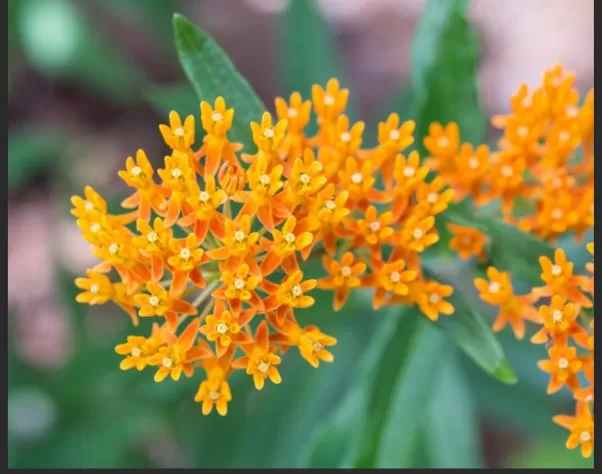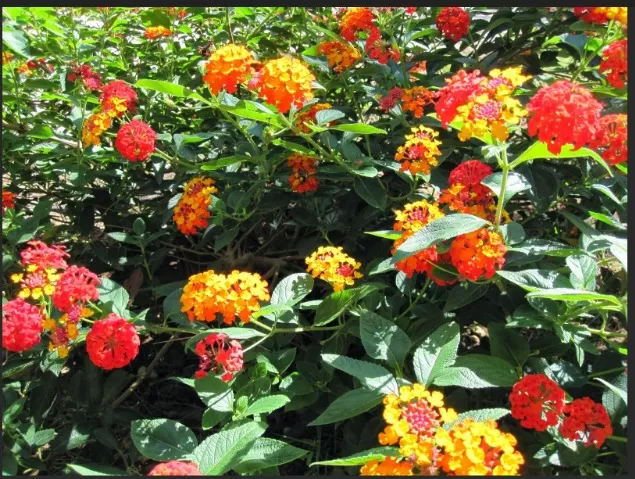Heat-Tolerant Plants for Hot Weather Survival. As the mercury soars and the scorching temperatures threaten to wither your garden, fear not! Embrace the challenge and transform your landscape into an oasis of beauty with these heat-tolerant plants.
These hardy varieties not only survive but thrive under the blazing sun, giving your garden every chance of successBy incorporating these heat-resistant plants into your landscape, you’ll create a garden that defies the scorching temperatures and thrives in adversity. Embrace the beauty and diversity of these resilient species, and let your garden flourish even in the hottest days of summer.
Vibrant Butterfly Weed (Asclepias tuberosa): A Lively Perennial That Beckons Butterflies and Honeybees

Witness the enchanting allure of Butterfly Weed (Asclepias tuberosa), a brilliant and captivating perennial that never fails to dazzle with its large, resplendent yellow-orange heads.
While other plants succumb to the scorching heat, this stalwart beauty stands tall, providing a vibrant oasis for butterflies and honeybees to frolic and feast.
Embracing a wide range of climates, Butterfly Weed flourishes gracefully across Zones 3 through 9 on the USDA’s Plant Hardiness Map.
Its tenacity and adaptability ensure it thrives in a variety of garden settings. At maturity, it reaches a modest height of 2 to 3 feet, yet its impact on the landscape is immense.
A delightful spectacle unfolds from June through late August, as the plant showcases its multi-blossom heads, like a spectacular symphony of color and life.
Its seasonal blooms have earned it a cherished spot in borders and flower beds, where it effortlessly infuses any garden with its cheerful presence.
Not only is Butterfly Weed a breathtaking addition to any landscape, but it also plays a crucial role in supporting local ecosystems.
As a favorite nectar source for butterflies and honeybees, this perennial fosters the essential pollination process, encouraging biodiversity and sustainability.
Whether you’re an avid gardener, a nature enthusiast, or simply seeking to attract more wildlife to your backyard, Butterfly Weed remains an essential choice for its beauty, ecological significance, and ability to transform any outdoor space into a magical haven of fluttering wings and buzzing delights.
Enchanting Purple Coneflower (Echinacea purpurea): A Vibrant Wildflower Journeying Across the Midwest
Behold the captivating beauty of Purple Coneflower (Echinacea purpurea), a wildflower that graces the countryside along meandering country roads throughout the vast expanse of the Midwest.
Flourishing gracefully in the diverse climates of zones 3 through 8, this heat-tolerant marvel bursts into a symphony of colors from June to August, defying the scorching summer temperatures with its tenacious bloom.
In its native form, the Purple Coneflower exhibits a certain untamed charm, and you can witness its natural elegance even as its bloom cycle draws to a close, creating a picturesque scene in the countryside.
However, for those seeking a more refined and compact display in their home gardens, the world of horticulture has embraced hybridized cultivars like the Powwow Wild Berry.
These cultivated variations of the Purple Coneflower offer a delightful twist on the traditional beauty.
With careful breeding and selection, these hybridized cultivars maintain a more compact height of 2 to 3 feet, exuding an air of sophistication while retaining the captivating allure of their wild ancestors. They seamlessly blend into home gardens, adding a touch of wildflower wonder while harmonizing with the surrounding landscape.
The enchanting Purple Coneflower, in all its natural and cultivated forms, proves to be a versatile and delightful addition to any garden.
Not only does it add a splash of color to the summer scenery, but it also attracts a myriad of beneficial pollinators, such as butterflies and bees, ensuring a thriving and ecologically diverse environment. Additionally, the Purple Coneflower has a long-standing reputation for its potential medicinal properties, making it a cherished and time-honored herb in traditional remedies.
Whether adorning the rustic countryside or gracing your home garden with its vivid charm, the Purple Coneflower stands as a testament to the resilience and beauty of native flora, a cherished symbol of the Midwest’s natural splendor.
Lantana (Lantana camara): A Brilliant and Resilient Blooming Marvel from Summer to Frost

Marvel at the radiant beauty of Lantana (Lantana camara), an extraordinary gem that steals the show in the gardens of Southern and Southwestern regions.
From the onset of July to the arrival of the first autumn frost, this remarkable plant sets its colorful display in motion, transforming the landscape into a tapestry of captivating hues. Adapting with grace to the warmer climates of hardiness zones 10 and 11, Lantana unveils its perennial charm, delighting gardeners year after year with a continuous profusion of blossoms in a breathtaking array of colors, ranging from soft yellow and delicate pink to vivid red and fiery orange.
Where winters might be slightly cooler, in zones 7 through 9, gardeners have the pleasure of cultivating Lantana as an annual, witnessing its majestic splendor for a single vibrant season.
Though its presence may be fleeting in these regions, the sheer brilliance it lends to any garden space is well worth the effort.
Standing at a humble height of 12 inches, this small but mighty shrub boasts an inherent toughness that only enhances its allure.
Lantana proudly endures the trials of drought and heat, embracing the sun’s warmth and steadfastly resisting the arid challenges of the environment.
Beyond its captivating appearance, Lantana extends its appeal as a favorite among gardeners due to its remarkable resilience and low maintenance requirements.
It effortlessly thrives in a variety of soil types, making it a versatile choice for various garden settings. Moreover, its nectar-rich flowers act as a siren call to an array of pollinators, including butterflies and hummingbirds, enhancing the ecological diversity of any outdoor space it graces.
Whether as a year-round perennial spectacle or a seasonal annual showcase, Lantana remains a symbol of beauty and endurance.
This vibrant blooming marvel promises to captivate hearts, spark inspiration, and bring unending joy to the gardening enthusiasts who welcome it into their cherished green havens.
Egyptian Star Cluster (Pentas lanceolata): A Delightful Annual for All Climates, Aflutter with Butterflies and Hummingbirds
Experience the enchanting allure of the Egyptian Star Cluster (Pentas lanceolata), a versatile plant that graces gardens across a wide range of climates.
In zones 10 and 11, it reveals its perennial charm, gracing the landscape year after year with its splendor. However, for those in zones 3 through 9, this captivating gem becomes an annual treasure, captivating hearts from early summer until the arrival of the first frost.
Standing tall at an impressive height of 3 feet, the Egyptian Star Cluster forms an elegant presence in any garden, commanding attention with its abundance of vivid red or soft pink star-shaped flowers.
Even under the sweltering heat of the hottest summer days, these blossoms prove irresistible to fluttering butterflies and delicate hummingbirds, transforming the garden into a lively and vibrant oasis of nature’s wonders.
Embracing a reputation as a beacon for pollinators, this delightful annual is a true friend to wildlife, encouraging a thriving ecosystem that benefits both gardeners and the environment.
Its nectar-rich flowers become a haven for these winged visitors, ensuring a constant dance of color and life amidst the green foliage.
Furthermore, the Egyptian Star Cluster showcases an admirable resilience and adaptability to various soil types, making it an ideal choice for a range of garden settings.
Its low-maintenance nature and impressive blooming period make it a cherished addition for gardening enthusiasts of all levels.
Whether as a fleeting annual delight or a steadfast perennial beauty, the Egyptian Star Cluster continues to captivate gardeners with its enduring charm and natural magnetism.
As the seasons change and the garden landscape transforms, this remarkable plant remains an ever-present source of joy and fascination, its starry blooms a testament to the timeless wonders of nature’s own artistry.
Viburnum (Viburnum dentatum): A Seasonal Symphony of Beauty and Wildlife Haven

Prepare to be enchanted by the captivating beauty of Viburnum (Viburnum dentatum), a versatile shrub that graces homeowners with a stunning display of soft white, faintly fragrant clusters of blossoms during the enchanting months of May and June.
As summer unfolds, this remarkable plant undergoes a metamorphosis, transforming into a glossy green specimen shrub that effortlessly endures the sweltering temperatures. Its generous boughs become a welcoming shelter, attracting a myriad of birds and small wildlife, creating a harmonious haven amidst its lush greenery.
Throughout the springtime spectacle, the viburnum becomes a sight to behold, adorned in splendid clusters of delicate white blooms that dance in the breeze, offering a delightful and fragrant show for all to admire.
As the season progresses, the plant transitions into a lush and vibrant green, showcasing its adaptability and resilience to the heat of summer.
Standing proudly at an average height of 8 to 10 feet, the Viburnum proves to be a formidable presence in any garden landscape, making a statement as both a standalone specimen or an integral part of a larger green oasis.
For those seeking an even more commanding presence, the hybrid cultivar Siebold reaches new heights, soaring up to 20 feet, adding an air of grandeur and elegance to any outdoor space.
Ideal for hardiness zones 2 through 8, this remarkable shrub embraces a broad range of climates, making it accessible and beloved by homeowners across different regions.
Its versatility and adaptability ensure that it thrives in various soil types and growing conditions, requiring minimal maintenance while offering maximum rewards.
Beyond its captivating appearance, the Viburnum is a beacon of life, attracting an array of winged visitors and small creatures that find refuge and sustenance amidst its lush foliage.
As the garden transforms throughout the year, the Viburnum remains a steadfast host for wildlife, infusing the landscape with vitality and ecological diversity.
Whether you’re a seasoned gardener or a novice green thumb, Viburnum stands as a symbol of natural beauty, resilience, and wildlife harmony.
Embrace this seasonal symphony in your own garden, and let its Timeless Elegance and enchanting allure enrich your outdoor haven.
*The information is for reference only.